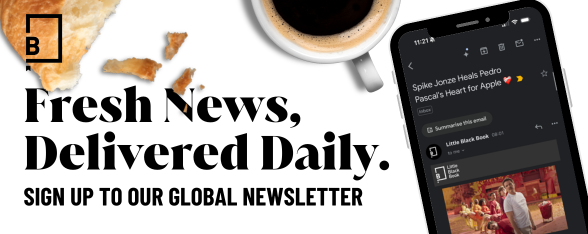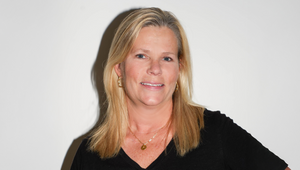
How Coca-Cola’s Taking Over the Alcohol Market

In 2018, Coca-Cola launched Lemon-Dou, tapping into the growing ubiquity of ‘lemon sour’ alcoholic drinks populating all of Japan’s drinking establishments. Since then, the company has further expanded into the alcoholic ready-to-drink (ARTD) category, which is projected to reach $100 billion by 2030, responding to a global trend of consumers across the demographic spectrum choosing to drink less but, crucially, to drink better – a trend termed ‘premiumisation’.
Mariana Branco, ARTD category lead Europe at The Coca-Cola Company, says: “The category has evolved in recent years as adult consumers look for alternatives to traditional categories such as beer, wine and spirits, and we see ourselves as well placed to compete and grow in this category as we have extensive know-how in both flavour innovation and responsible brand-building.”
With collaborations with Bacardi and Absolut, Mariana says Coca-Cola is focused on creating high-quality, premium products that are market-specific, balancing a distinct identity from Coca-Cola’s non-alcoholic products while “maintaining a clear narrative that ties back to Coca-Cola's legacy that consumers trust.”
LBB chatted with Mariana to learn more about the trends influencing the category and, in turn, product development, and why the brand is navigating the expansion with utmost care and responsibility.
LBB> The alcoholic drinks market is in flux right now, with the consumer category most often associated with drinking – young people/gen z – reducing or cutting out alcohol entirely. What’s the landscape like from your perspective?
Mariana> To put it very simply – there are more options for young adults in terms of socialising and entertainment today. For those who do drink alcohol, we see them drinking better rather than drinking more, and this is where the opportunity lies for us. Many of these younger adults are looking for something different to traditional alcohol categories such as beer or wine, and that’s where we believe our ARTDs come in. It’s true that ARTDs have been around for some time in many markets but there is a lot more variety and choice, which is exciting. Flavour, convenience, and control are big drivers of ARTD growth, and we believe we are well equipped to deliver those in a responsible way for adult consumers in the markets in which we operate.
LBB> Who is your target consumer and what kind of insights are you working with? Are there any market insights you can share with us that are particularly interesting; e.g. what's happening in Italy versus France?
Mariana> Our target consumers cut across various demographics, but generally speaking they are adult consumers of legal drinking age seeking great tasting alcoholic drinks in a convenient and controlled format. We develop our portfolio to be consumer-centric, and that means taking insights and learning from our customers and consumers. It means we then can offer drinks, flavours, and brands that they know and love. Flavour profile or alcohol strength can change by market for our ARTDs. Take Germany for example, a unique regulatory environment has meant ARTDs have traditionally had a higher alcohol by volume % than in other European markets. We can adapt our ARTDs accordingly to ensure we are getting the taste just right while still adhering to rigorous production processes and standards, which means we never have to compromise on the quality of our drinks as a result.
LBB> ‘Premiumisation’ has been an ongoing trend in the alcohol category. Is this something you’re working with/around at all?
Mariana> Absolutely, premiumisation is something we see. By highlighting the superior quality and unique ingredients in our products, we can cater to the sophisticated tastes of our adult consumers looking for low alcohol refreshments. Our partnerships with iconic spirits brands allow us to offer premium ready-to-drink options that align with the broader industry trend towards high-quality, premium products.
LBB> Coca-Cola is an iconic non-alcoholic brand. How does the company ensure its ARTD products align with its core brand identity while standing out in the competitive alcoholic beverage space?
Mariana> We have been in the business of creating beverages that consumers love and trust for many years, this commitment continues in our alcoholic offering. By carefully designing our brand communications to differentiate our alcohol brands while maintaining a clear narrative that ties back to Coca-Cola's legacy that consumers trust. We work purposefully to make the look and feel of our campaigns different to what the non-alcoholic portfolio.
LBB> With Coca-Cola’s collaborations with Bacardi and Absolut, how does the company approach co-branding and storytelling to create compelling advertising campaigns for these products?
Mariana> Our co-branding strategy focuses on combining the heritage and strengths of both brands to craft engaging and authentic narratives. In our storytelling, we emphasise the unique attributes and shared values of the partnerships, creating compelling content that highlights the superior quality and heritage of the products. Utilising marketing channels such as digital content and experiential campaigns, we engage consumers by bringing these stories to life and fostering emotional connections with the brands.
LBB> With the ARTD category projected to reach $100 billion by 2030, what role do you see advertising playing in sustaining and accelerating this growth? Are there any emerging marketing channels or trends Coca-Cola is going to explore?
Mariana> Advertising plays a pivotal role in both sustaining and accelerating growth in the ARTD category. But I would rather not only talk about how we create advertising, but how we are evolving with our marketing transformation agenda to create experiences that engage and connect with consumers. So yes, creating different products, digital, retail or live experiences are crucial to accelerate growth, but specially connect and engage with adult alcohol consumers. And for that we always look at the trends and test out new avenues to play in, for us it’s important that whatever route we choose we do this in a safe and responsible way, especially in the ARTD category. We want to ensure we grow with the consumers and create campaigns that resonate with them, no matter what the platform is.
LBB> What role does responsibility play in how you’re approaching growth in the category?
Mariana> We understand that entering the alcohol category brings new responsibilities and we take these very seriously. We have a robust responsible alcohol marketing policy (RAMP) in place, and responsible marketing is part of the DNA of The Coca-Cola Company. We believe we can and are offering more choice for more consumers across more occasions, and all in a responsible way.
Our RAMP is foundational for our work in the category and actually determines how we innovate and bring our alcohol brands to market responsibly. At the heart of our approach to marketing and selling alcohol is that our brands are only ever directed at adults over the legal purchasing age, and we encourage only drinking in moderation by those who choose to drink.















